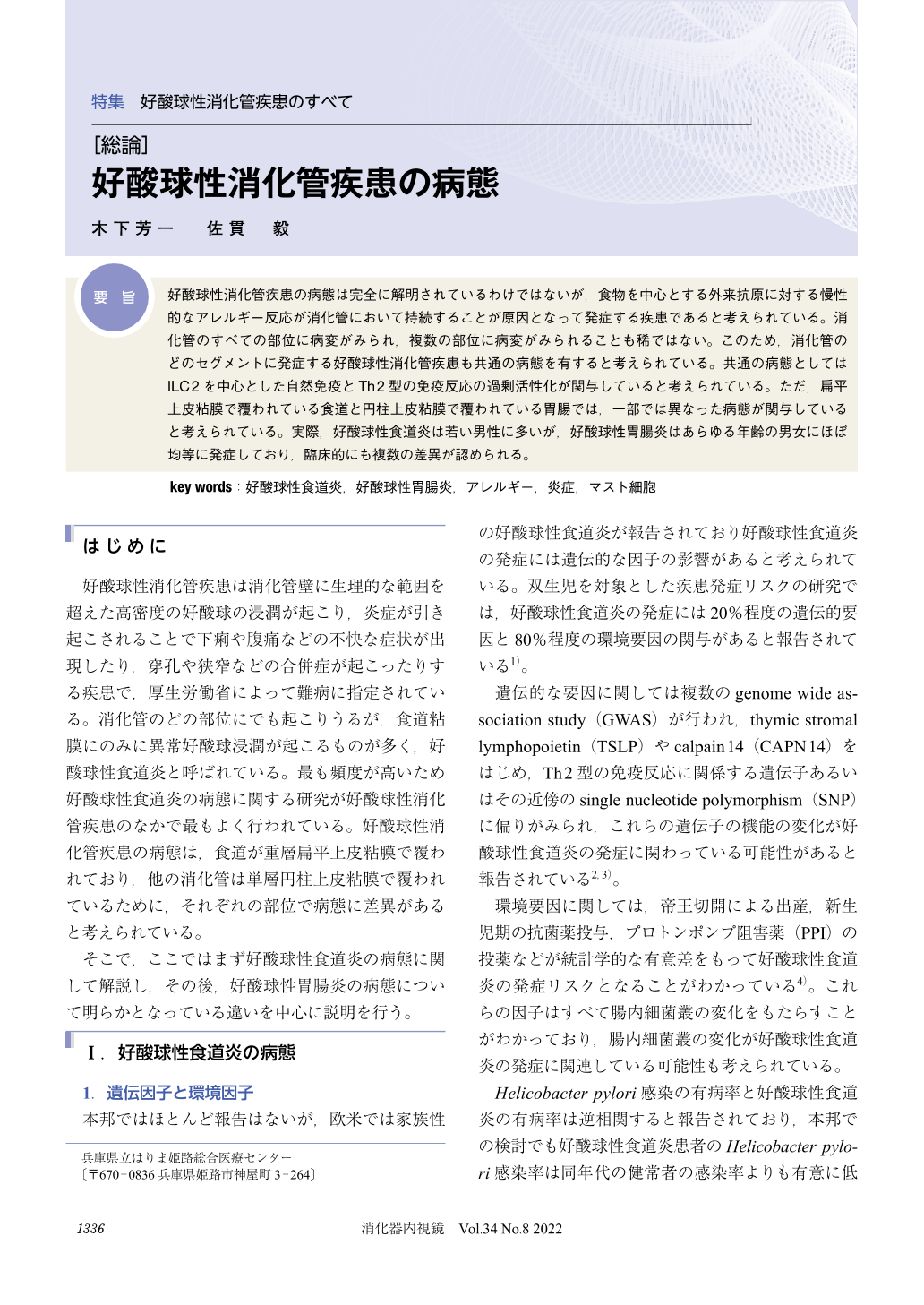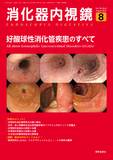Japanese
English
- 有料閲覧
- Abstract 文献概要
- 1ページ目 Look Inside
- 参考文献 Reference
要 旨
好酸球性消化管疾患の病態は完全に解明されているわけではないが,食物を中心とする外来抗原に対する慢性的なアレルギー反応が消化管において持続することが原因となって発症する疾患であると考えられている。消化管のすべての部位に病変がみられ,複数の部位に病変がみられることも稀ではない。このため,消化管のどのセグメントに発症する好酸球性消化管疾患も共通の病態を有すると考えられている。共通の病態としてはILC2を中心とした自然免疫とTh2型の免疫反応の過剰活性化が関与していると考えられている。ただ,扁平上皮粘膜で覆われている食道と円柱上皮粘膜で覆われている胃腸では,一部では異なった病態が関与していると考えられている。実際,好酸球性食道炎は若い男性に多いが,好酸球性胃腸炎はあらゆる年齢の男女にほぼ均等に発症しており,臨床的にも複数の差異が認められる。
The pathophysiology of eosinophilic gastrointestinal disorders (EGID) is not yet fully understood. However, continuous chronic allergic inflammation against the exogenous allergens, including mainly food-contained antigens, is considered to be the main cause of EGID. The disease can be found in any segment of the gastrointestinal tract and is frequently found in more than two segments. Therefore, the disease may have a common pathophysiology, even if the inflammation occurs in any segment of the gastrointestinal tract. The involvement of innate immune reaction, including ILC2 and exaggerated adoptive Th2 immune reaction, may be the main pathophysiology of EGID. Eosinophilic esophagitis and eosinophilic gastroenteritis, which are observed in different segments of the gastrointestinal tracts covered with squamous epithelium or columnar epithelium respectively, may have partially unique pathophysiology. Indeed, eosinophilic esophagitis can be observed mainly in young males, while eosinophilic gastroenteritis can be found in any age group and in any gender.

© tokyo-igakusha.co.jp. All right reserved.


